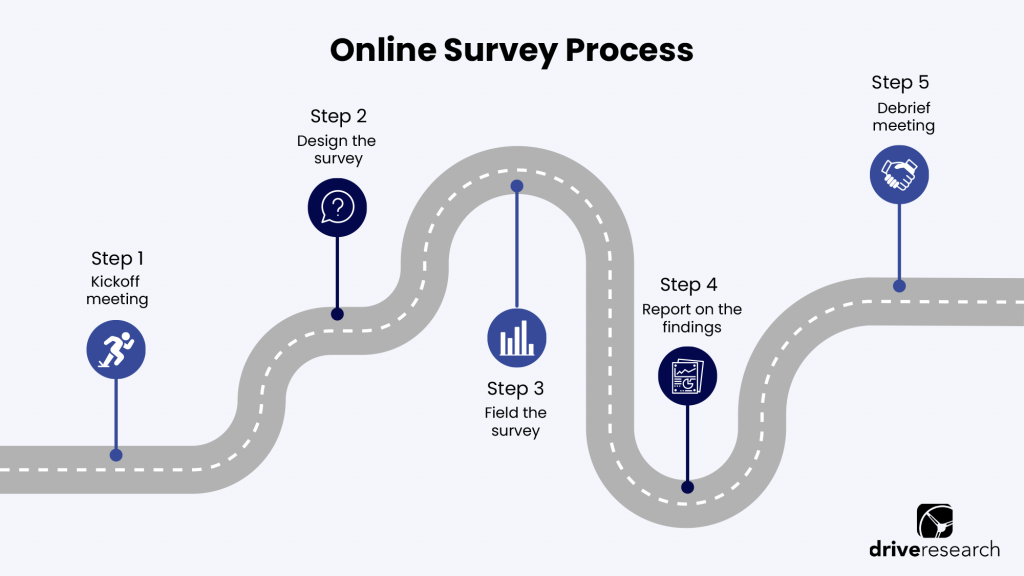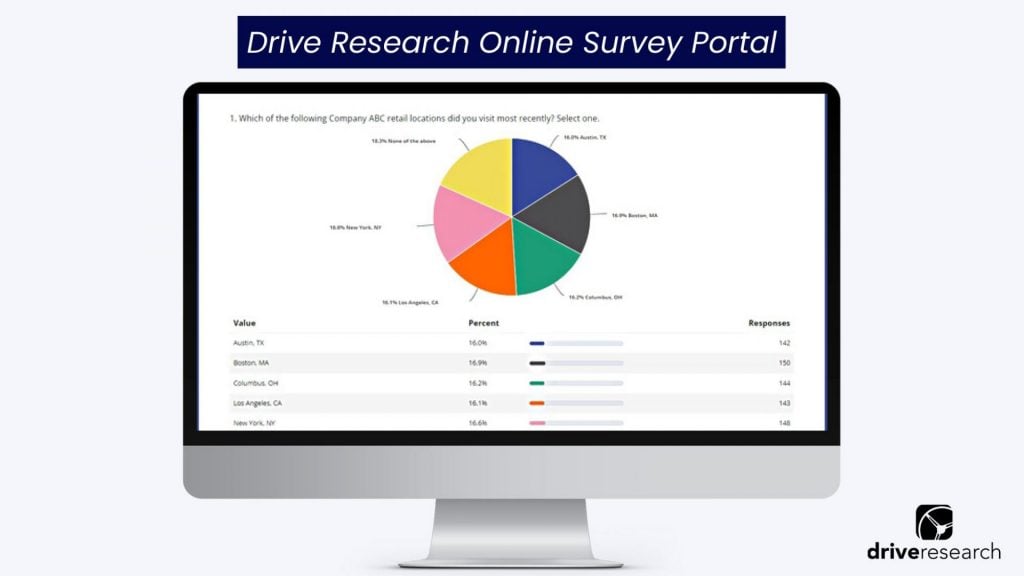
Conducting employee pulse surveys is something to seriously consider practicing if your organization is not already.
Assuming that everything is going well with your employees will jeopardize your business’ growth.
And without surveying employees, how can you expect to develop a complete understanding of your business? What’s more, how can you understand your staff better to increase engagement?
You can’t!
What are Employee Pulse Surveys?
An employee pulse survey is a short and easy set of questions sent to staff members. The brief questionnaire is sent several times throughout the year to capture ongoing employee feedback.
Pulse survey topics range from job-related functions, satisfaction, communication, and overall company culture.
As a result of this type of market research, HR and leadership teams can discover what your staff likes and dislikes about their work experience, allowing you to make the necessary changes.
You’ll be able to tap into what employees are lacking and what can be improved based on direct feedback, not assumptions.
And with only 20% of US employees pleased with their current jobs, these employee pulse surveys are becoming increasingly important.
How Often Are Pulse Surveys Done?
Employee pulse surveys are designed to be conducted regularly including quarterly, monthly, or even weekly.
As the term “pulse” suggests they are short to complete. For instance, there are typically 10 to 15 questions included in a quick pulse survey.
How Are Pulse Surveys Different From Employee Engagement Surveys?
The main differences between a pulse survey and an employee engagement survey are the length of the questionnaire and the frequency it is being sent.
Employee engagement surveys are commonly completed on an annual or semi-annual basis. They often take 15 to 20 minutes to complete and collect detailed information on the experience of working at a company.
Whereas, staff pulse surveys are sent on a more regular basis, such as quarterly or monthly. They should take no more than 5 minutes of an employee’s time to complete.
The content of an employee pulse survey may overlap with an annual employee survey to some degree.
Though, pulse surveys are more effective for tracking progress and benchmarking data from your larger, annual employee survey.
For instance, organizations can analyze what may have caused a higher employee turnover rate between their annual employee engagement survey and their Q2 pulse survey.
Recommended Reading: How to Increase Employee Retention for a Thriving Workplace
What is the Impact of Pulse Surveys?
The goal of employee pulse surveys is to track metrics and attitudes concerning the employee experience, especially in response to business actions.
Findings from the staff pulse surveys may include:
- An understanding of what is important to your employees
- How satisfied they are with those factors
- What improvements are necessary to drive loyalty higher
- How your organization stacks up against its peers through benchmarks
Though, there are many other benefits to conducting employee surveys. Below are a few of the most advantageous reasons to gather ongoing employee feedback.
Or, for a brief overview, watch the video below by our full-service employee survey company.
1. Measures KPIs over time.
One of the main advantages of an employee pulse survey is the ability to monitor changes over time.
For example, your organization can directly measure the impact of an internal change like work-from-home flexibility on employee satisfaction.
If the survey is conducted monthly and the shift was made in May, observe how the data changes in June and each month going forward.
This additional layer of data is largely missing from a yearly employee engagement study.
Here are a few reasons to collect employee feedback more regularly:
- Eliminate temporal bias
- A better concept of market flux
- Continued real-time data
- Catch problems as they happen
- Research key questions
- On-going customer engagement
Never underestimate the power of conducting a recurring survey and its impact on reducing employee attrition.
Yes, a one-and-done survey will give you some key insights.
But, if you run these regularly, the amount of helpful feedback you’ll draw in is immeasurable. This route will yield far more data.
Recommended Reading: How to Use Employee Survey Benchmarks
2. Earns higher response rates.
Studies reveal that 58% of staff would like employee surveys to be more frequently run.
Therefore, you can expect to see excellent response rates with employee pulse surveys because staff members are wanting an outlet to share honest feedaback.
Anywhere from 80% to 100% of employees can realistically complete the survey each cycle.
While perfect would be nice, it does not get any better than this for research response rates.
Recommended Reading: How to Increase Your Employee Response Rates
3. Reduces costs
Due to the reduced time and cost involved with this type of research, many organizations are exploring the concept of these surveys as an alternative to an annual engagement survey.
The cost of outsourcing an employee pulse survey ranges.
Though, generally speaking, budgeting $2,000 to $8,000 is recommended. They are generally more affordable than other types of market research because they are short online surveys.
Below are the common factors that go into deciding costs:
- Survey programming, design, testing
- Project management
- Sample cost and completed survey count
- Analysis and reporting
4. Acts as regular check-ins
The specific act of conducting employee pulse surveys also has benefits for how employees view your organization.
When done genuinely, pulse surveys can act as a virtual comment box for suggestions or complaints.
These regular check-ins with employees send a message that the organization cares about its workers and what they think.
This allows employers to show their staff they can be empathetic which makes a big impact.
For instance, up to 96% of current staff believe empathy in the workplace is essential.
Employees will pick up on the fact that their employer values their feedback.
In turn, this will create a positive work environment and improve workplace culture for better long-term employment.
5. Reminds employees of company values and goals
Reminders of organizational priorities like customer service or innovation in the survey will also have positive effects.
By answering questions about these topics repeatedly through conducting employee pulse surveys, staff will often have these goals top-of-mind more as they work.
This may be a more natural way to increase employee motivation than micromanaging.
How Do You Conduct an Employee Pulse Survey?
The most efficient way to administer an employee pulse survey is an online survey. Data collected via online surveys is immediate, cost-effective, and reliable.
The staff pulse survey may be sent individually to every employee’s email or posted on an organization portal as an open link.
To ensure honest responses using a third party for employee surveys is crucial.
Attempting to conduct the research internally greatly increases the risk of employees withholding opinions or overstating positive feedback.
If that happens, the research ultimately has very little value for your organization.
Using a market research partner like Drive Research also saves you the headache of designing, fielding, and analyzing the entire project.
Below, we’ll briefly cover the basic steps of conducting an online pulse survey with a third party.

1. Kickoff meeting
A kickoff meeting involves both your team and the third party. Think of it as an introduction.
Whether it’s in-person or virtual, this meeting is essential and can never be skipped.
It’s at this time you’ll be able to cover:
- Key objectives
- How to use the survey results
- Other general questions
2. Writing the survey
Not to be outdone by the kickoff step, the design process of your employee pulse check is equally as important.
This is, as you’d expect, the step where the survey is written before being placed in an online survey platform.
Mainly, this step involves coming up with survey questions.
It’s important employee pulse survey questions are:
- Clear and concise
- Engaging
- Relevant to your goals and objectives
The best thing to do here is to draft an outline. This will ensure everything is in order and 100% necessary.
3. Programming and testing
Once the questionnaire is written, our pulse survey company will program it into the online survey platform.
If conducting the survey in-house, we recommend following an online survey testing checklist. This promotes organization and an overall successful outcome for your survey.
When one area of the survey is programmed incorrectly, this has a ripple effect and taints the entire project.
4. Fieldwork and data cleaning
Before sending the staff pulse survey, Drive Research recommends sending a pre-survey email to employees.
In the email, let employees know to check their inboxes in the coming days for an employee survey invitation from Drive Research.
It is also a good time to express why their feedback is important to encourage more quality responses.
During fieldwork, our employee pulse survey company provides a live portal to company stakeholders. This allows you to see responses in real time.

Use our interactive link to see how the client portal works
After fieldwork ends, the data will be “cleaned.” This weeds out the viable responses from the faulty ones.
Faulty responses can look different.
Below are a couple of things to look out for when cleaning the data.
- Duplicate entries: Just how it sounds. This is when the survey has been taken by the same respondent twice. Although, unlikely in the case of employee pulse surveys.
- Contradictions: This is when a respondent completely contradicts themselves from one question to another. Often, they’re not paying close attention or rushing through the survey.
5. Reporting and final debrief
The final step! There are different reporting options for employee pulse surveys with our third-party market research company.
Being that these surveys are conducted more regularly, a common reporting approach is a topline summary with key findings.
Though, there is the option for a more comprehensive report with elements such as an executive summary, results broken down question-by-question, an infographic, and more.
At Drive Research, we’ll also go over the report with you in a debrief meeting if you prefer. This is to ensure all key points of the survey are taken and leaves room for any unanswered questions.
Examples of Employee Pulse Survey Questions
Before diving into writing survey questions, be sure to spend time thinking about what you would like to ask your employees.
Common topics covered in staff pulse surveys include loyalty drivers, organization culture, leadership decision-making, and improvement areas.
Below our employee engagement company shares excellent examples of questions to ask in a pulse survey.
- Are there specific areas of your position you need assistance with?
- Does your company offer effective outreach strategies?
- Does your company offer growth opportunities?
- Are you pleased with your company’s communication strategies?
- Are you satisfied with your company’s leadership?
- Does your company allow workplace flexibility?
- Do you feel your company fosters a positive company culture?
- Do you look forward to coming to work?
- Do you have the same resources at home as in the office?
- Do you feel your comments/concerns are listened to?
The goal of the questions is to gather quality, measurable feedback in a short amount of time.
Even though the surveys are shorter, they yield a tremendous amount of data.
Final Thoughts
By running an employee pulse survey, organization leaders gain invaluable insight into team sentiment.
From workplace satisfaction to needed improvements, these surveys will ask staff specific questions about their work experience.
Don’t be intimidated by running these surveys regularly. When you work with a third-party employee survey company like Drive Research, the hard part is already done.
Contact Our Employee Satisfaction Survey Company
Learning the needs of your staff doesn’t have to be a long, drawn-out process. Running an employee pulse check is purposely short, saving time while still gathering actionable insight.
Drive Research is a national market research company.
Our experts can execute an employee pulse survey for organizations anywhere in the country – no matter the size or industry.
Hiring a third-party team like Drive Research to run these surveys takes ensures honest and accurate feedback to drive decision-making.
Interested in receiving pricing for a pulse survey? Contact us below.



